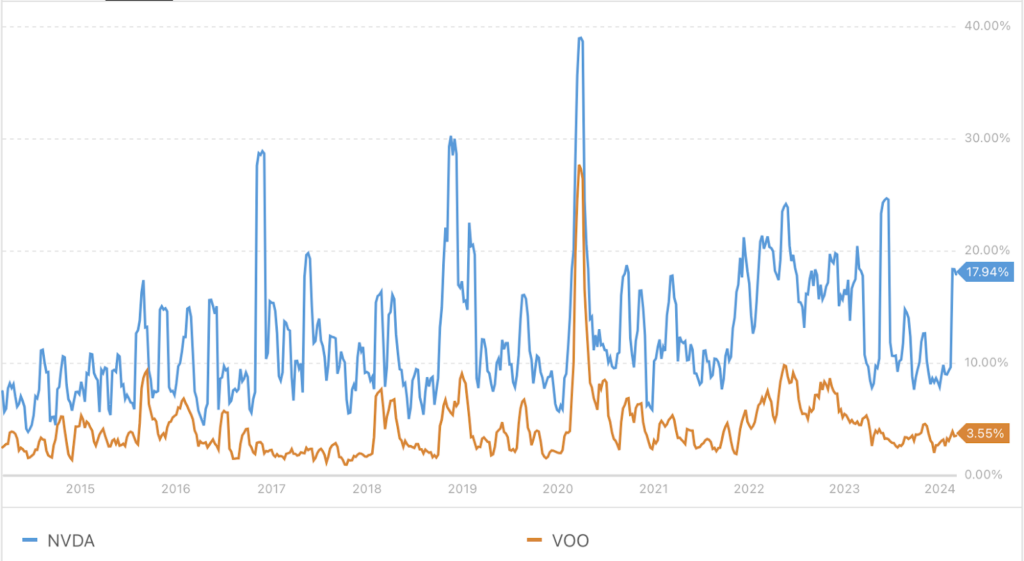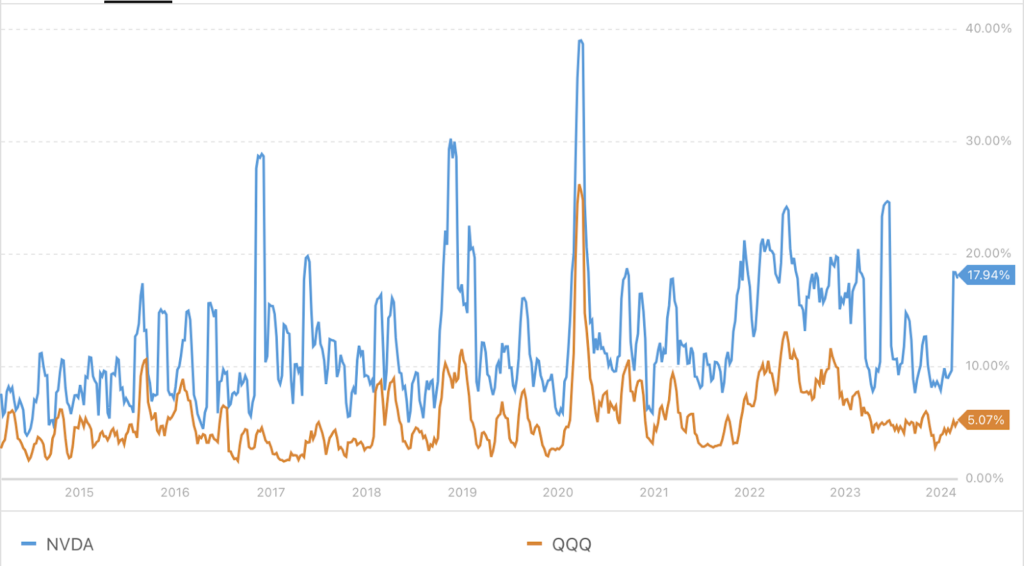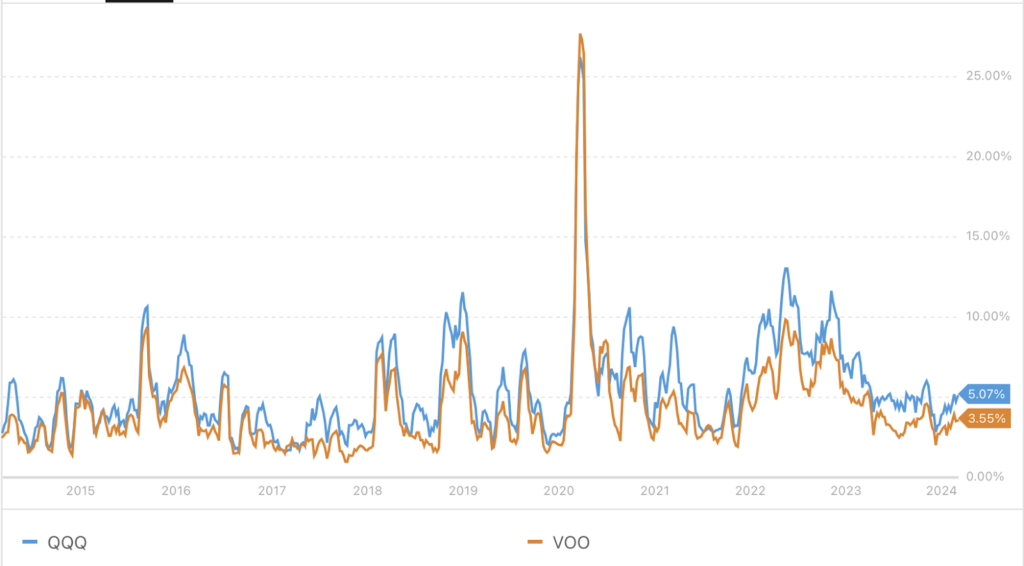Many people have been noticing the crazy surge in Nvidia’s stock recently and are considering whether to buy it along with VOO or QQQ.
However, you actually have another option: to buy all three together, which is the approach I’m currently taking.
So, I’ll guide you through two steps, showing you how to determine the most suitable investment amount for yourself. Finally, I’ll also share my allocation ratio, allowing you to pursue Nvidia’s high returns while still benefiting from the stability of VOO and QQQ.
Step One: Understanding the Characteristics and Risks of Nvidia, VOO, and QQQ
Before investing in these three assets, you must first have an understanding of their characteristics and risks.
Here, I will explain their features, risks, and volatility:
Features and Risk
The characteristics of Nvidia lie in its leading position in the field of AI, which has even prompted other companies to invest heavily in this area. In simple terms, the company’s future is tied to AI-related products, which greatly influences its stock price movements.
VOO and QQQ, on the other hand, replicate and track major indices, namely the S&P 500 and Nasdaq 100, respectively. With a diverse range of constituent stocks, they offer a level of risk diversification compared to individual stocks.
However, it’s worth noting that QQQ has over half of its holdings in technology companies, making its risk relatively concentrated compared to VOO.
If we were to rank the risk of these three assets from high to low, it would be Nvidia > QQQ > VOO.
Volatility
Here, I’m citing data from Portfolio Lab to compare the volatility of these three stocks over the past decade, pairing them off against each other.
First, Nvidia vs VOO:

Apparently, the fluctuation for Nvidia is greater than VOO.
Next, Nvidia vs QQQ:

Similarly, the fluctuation for Nvidia is greater than QQQ.
Finally,let’s compare VOO and QQQ:

Looks like they are similar, actually QQQ is greater than VOO.
Therefore, in terms of volatility, it is Nvidia > QQQ > VOO.
Step Two: Assessing Your Risk Tolerance
Next, let’s shift the focus back to ourselves.
Here, I’ll discuss both the psychological aspect and your financial planning:
Psychological aspects
In terms of psychological aspects, it mainly relates to the volatility of stock prices.
When you see the stock price fluctuating up and down continuously, do you easily feel nervous, or even find it affecting your daily routines?
Or, when you observe such a significant drop in a single day, do you feel uneasy throughout the day?

If a particular stock or ETF tends to cause you stress, whether it’s QQQ or Nvidia, then it’s best to minimize its proportion in your portfolio.
Personal financial planning
Next, your personal financial planning is also a crucial aspect that needs evaluation.
Future plans such as traveling abroad, buying a house, getting married, having children, or saving for retirement will all affect your allocation proportions.
If you have short-term financial needs, such as traveling or buying a house, it’s not advisable to allocate too much money to assets with higher volatility. In other words, you should allocate a larger proportion to VOO and reduce the proportions of QQQ and Nvidia.
However, for long-term goals like retirement, you can allocate a larger proportion to both VOO and QQQ, but still maintain a lower proportion for Nvidia.
How do I allocate my funds to them?
Finally, let me share how I allocate my funds among these three assets.
I focus mainly on VOO, accounting for over 80% of my portfolio. For the higher-risk and more volatile QQQ and Nvidia, I allocate 15% and 2.5% of my funds, respectively.
This allocation is primarily aimed at accumulating retirement savings, a long-term goal. Therefore, I lean towards a combination that won’t cause me too much stress. As you can see, this allows me to hold onto them without much burden while potentially enhancing overall returns.
You might wonder if I would increase the proportions of QQQ and Nvidia, especially considering Nvidia’s recent surges. It’s natural to feel tempted, but when I calm down and revisit my primary goal of long-term stability, I choose not to increase their proportions, even if they could potentially bring higher returns.
For those of you still undecided, you can consider this approach. Once your tolerance increases, adjustments can be made accordingly.
